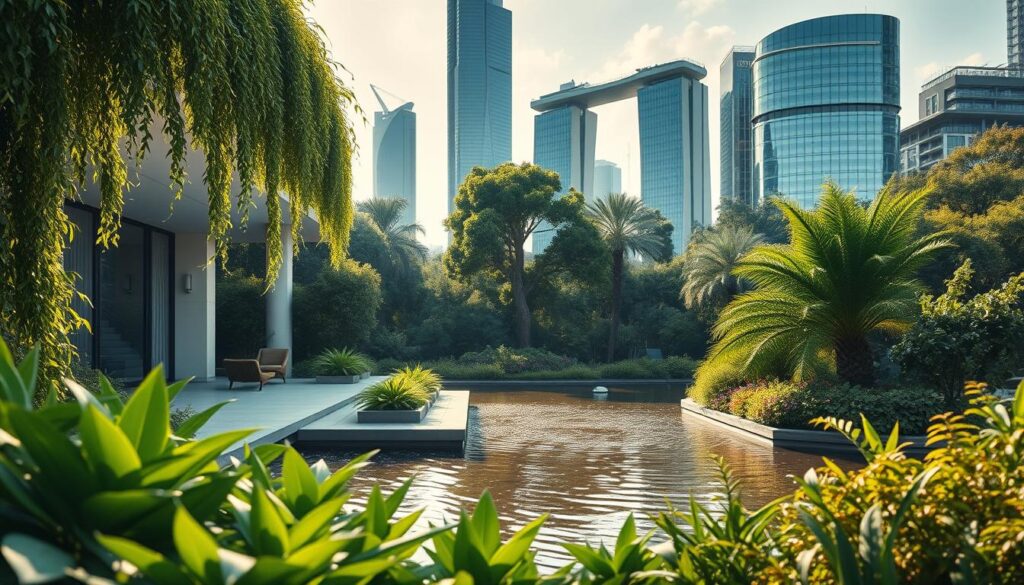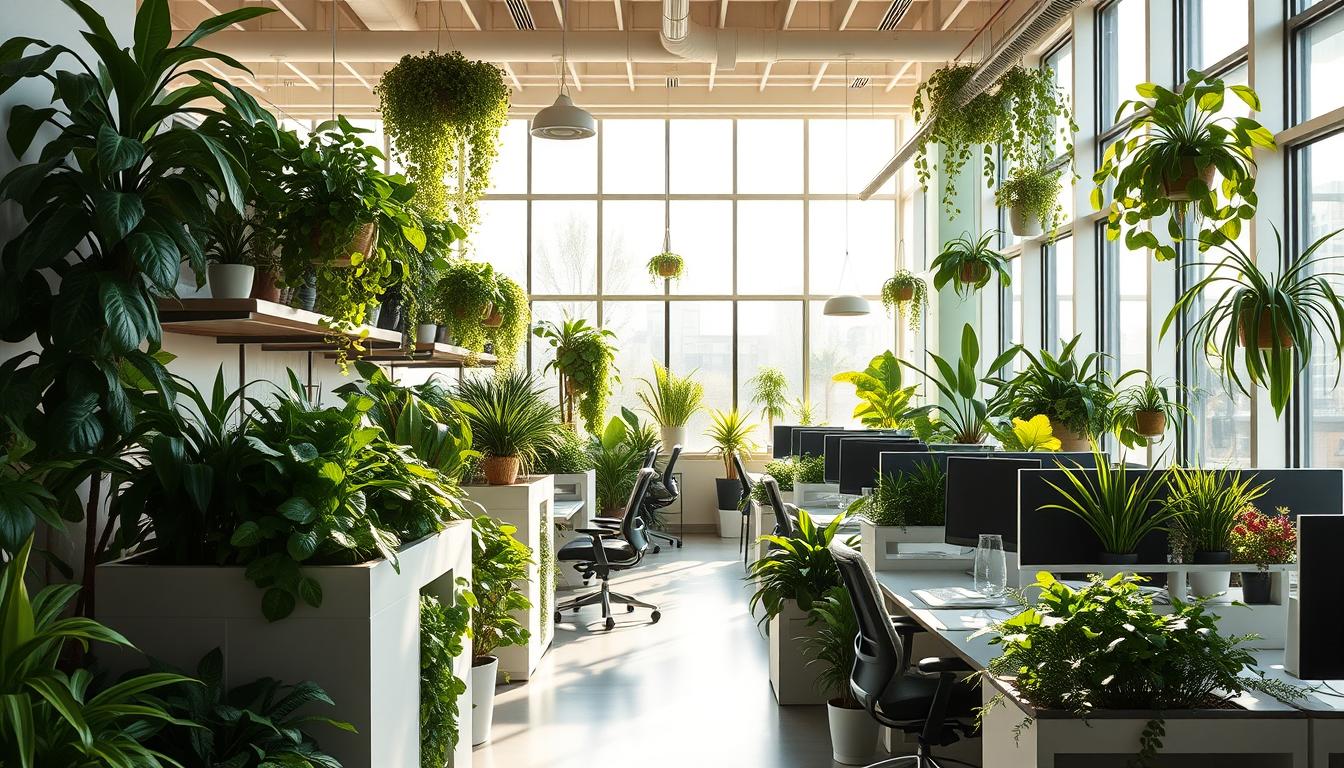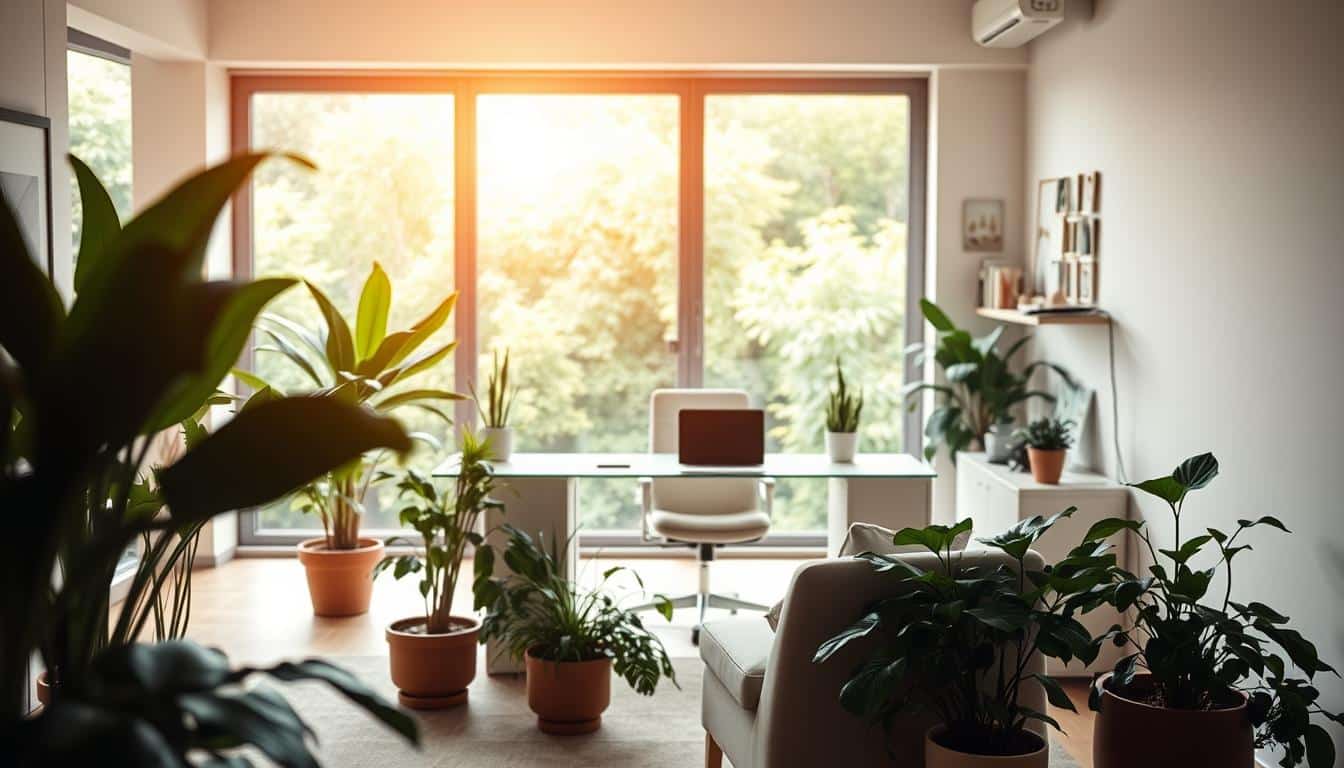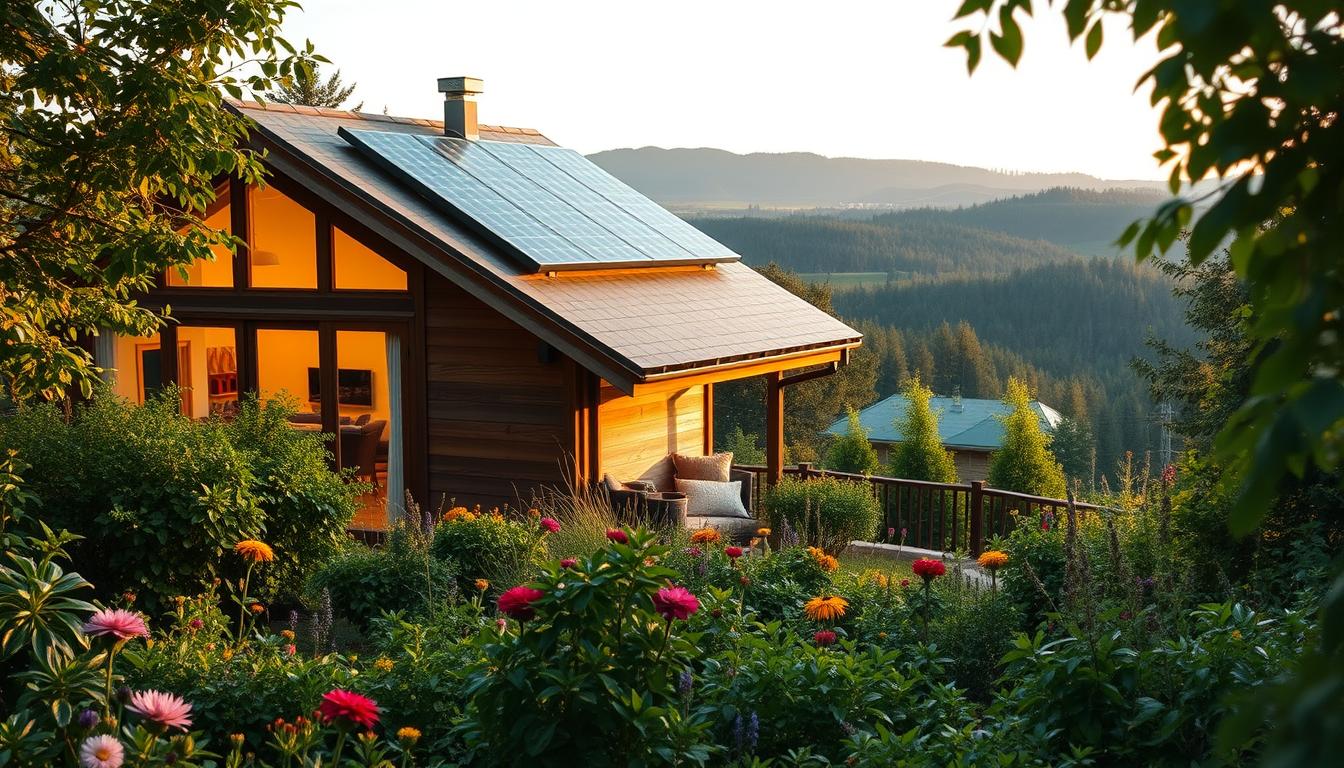In a world where cities keep growing, greenery-driven space modulation is key. It makes living areas sustainable. It’s not just about looking nice; it’s crucial for our planet’s health, city life, and our own happiness. Adding nature to our cities helps them and us. It also supports the United Nations’ goals for a better future.
Projects like local parks and wall gardens fight climate change and boost our health. By choosing sustainable habits, we make places where people and nature thrive. This turns our cities into lively, caring communities.
Introduction to Greenery-Driven Design
Greenery-driven design is changing the way we think about sustainable architecture. It came about to tackle urbanization problems. It mixes natural elements into buildings and cities. The goal is to make structures blend with nature and lessen urbanization’s negative effects.
This approach is all about adding more green spaces in cities. It looks at putting in green roofs, vertical gardens, and parks. These changes make cities look better and improve life for everyone there.
Having more green spaces is good for both mind and body. These areas help people feel connected, less stressed, and healthier. Green design also cools cities down, cleans the air, and helps plants and animals thrive.

This way of designing is key to creating better cities for the future. As cities get bigger, using green design makes urban areas nice places to live. It cares for the health of all city residents.
The Importance of Green Spaces in Urban Areas
Green spaces in cities are more important than we can say. As cities grow and more people move in, these green spots are like a breath of fresh air. They help lessen the bad effects of city life, such as air pollution and warming temperatures. By supporting different plants and animals, they also make the air cleaner.
These areas also help people connect. Parks and gardens are great spots for everyone to meet, talk, and work together. This makes communities stronger. Plus, being in green spaces is good for our minds, giving us a quiet place to have fun and relax. They give a home to many animals, making cities better places to live.
Health Benefits from Greenery-Driven Space Modulation
Greenery in urban places brings great health perks. Putting nature in cities improves physical and mental health. People can enjoy parks or community gardens, do activities like walking, jogging, or just relax outdoors.
Green areas also make the air cleaner by removing pollutants, cutting down on breathing problems. Folks living near plants often have fewer allergies and asthma issues. Plus, the soothing vibes of nature help decrease stress, making a space where everyone can feel mentally better.
Benefits include:
- Improved cardiovascular health through active lifestyles
- Enhanced psychological wellbeing by creating tranquil spaces
- Increased opportunities for community engagement and social interaction
Adding more greenery to city planning leads to healthier communities. By focusing on green spaces, cities ensure better physical and mental health for everyone.
Types of Green Spaces and Their Impact
Exploring different green spaces shows how they help cities. Urban parks are crucial because they provide play and chill spots for folks. They become places where people meet, helping everyone feel connected.
Community gardens are unique green spaces that boost local food growing and care for the environment. They bring people together to grow plants and strengthen friendships. These gardens also teach us the value of living sustainably and eating healthily.
Pocket parks and greenways do more than just beautify. They clean the air, support wildlife, and cool our cities. Good green designs can also prevent flooding by soaking up rainwater. Linking these spaces helps nature flourish even in busy cities, making them better for everyone.
Greenery-Driven Space Modulation Techniques
Adding green modifications to cities is key for beauty and ecological balance. These methods make living areas better and look nice, too. Vertical gardens and green roofs change buildings and lands in their unique ways.
Incorporating Vertical Gardens
Vertical gardens are becoming favorite, as they bring plants into tight spots. They let plants grow up walls, saving space but also looking good. They bring these benefits:
- Improved air quality through natural filtration.
- Enhanced building aesthetics, increasing property value.
- Urban cooling effects, mitigating heat in dense city areas.
Vertical gardens mix city life with nature. They help us feel well and closer to the environment.
Green Roofs and Their Benefits
Green roofs help make buildings more efficient and cities greener. They insulate and cool down our urban spaces. Here are their advantages:
- Increased biodiversity by creating habitats for various species.
- Reduction in stormwater runoff, easing the burden on drainage systems.
- Economic benefits through energy savings in heating and cooling.
By focusing on green roofs, cities show they care about being sustainable and tough. Using both vertical gardens and green roofs is a smart way to live in cities, caring for us and the earth.
Case Studies of Successful Eco-Friendly Spaces
Looking at successful eco-friendly spaces gives us great ideas on green design. In the US, many cities have blended nature into urban areas. This shows how vital green spaces are for city life.
The High Line in New York City is a great example. It turned an old railway into a lively park. This project shows the power of community help and smart urban planning.
In San Francisco, Salesforce Park is a rooftop green haven for city folks. It’s a place that offers calm and connection in the city rush. Green places like this also clean the air, showing how nature and cities can mix.
Miami’s Complete Streets project added green paths in the city. It focuses on making streets safe and easy to walk. Projects like this teach us how to blend nature into our cities smartly.
Different cities have made spaces that fit their unique needs and bring people together. By learning from these projects, city planners can use these ideas to make our cities greener and more livable.
Challenges in Implementing Green Spaces
Green spaces come with big benefits. Yet, they face many challenges. These include urban planning hurdles, regulatory limits, and competing land uses. Also, without enough money, it’s hard to even start these needed projects.
People sometimes resist green projects. They might worry about changes or feel left out of the plans. Plus, keeping these areas up can cost a lot. This makes it important to find ways to keep communities involved and supporting these efforts.
When we get the full picture of these issues, everyone can work together better. Planners, developers, and locals can work as a team. This way, making cities greener can work out well for everyone.
Community Engagement in Green Design Initiatives
Community engagement is key for green design successes. Including residents in designing lets projects meet the community’s needs better. This leads to lasting and impactful green areas.
Using participatory planning like workshops, surveys, and design sessions helps get everyone involved. These methods let people share thoughts, voice concerns, and help make decisions. This not only brings the community closer but also makes them feel they own the new green spaces.
To engage communities in green projects, try these:
- Conduct regular workshops to gather input and feedback.
- Create surveys to assess community priorities and preferences.
- Incorporate local art and culture into design plans to reflect community identity.
Putting the public first means green spaces do their job, helping everyone. A focus on involvement improves designs and makes our cities lively and welcoming.
Future Trends in Greenery-Driven Design
The future of design with greenery shows an exciting blend of tech and nature. Cities want to be more sustainable. To do this, new trends are popping up that mix ecosystems into urban life.
Smart urban gardens are a big step forward in urban design. They use technology to make plants grow better and support city farming. These gardens use smart watering and sensors to check the air and soil. This makes them more efficient and productive, showing how we’re moving towards sustainability.
Biomimicry is also becoming more popular in design. It takes cues from nature to solve city problems. Designers look at how nature works to make buildings and spaces that act like natural systems. This helps cities and the environment get along better.
Working together is key for the future of green spaces. Architects, city planners, and ecologists are joining forces. By sharing ideas and knowledge, they create urban designs that are good for people and the planet. This teamwork improves the design process and makes sure cities meet both ecological and social needs.
These future trends focus on making spaces where nature and city life flourish together. They show how important creativity is for sustainable cities.
Conclusion
The value of greenery in cities is immense. Adding nature to cities not only looks good but also helps people feel better. These spaces let people relax, meet others, and improve overall city health.
As cities grow, bringing in more green spaces is crucial. This move towards sustainable planning helps protect our environment. It’s key for tackling the difficulties of city life and keeping our planet safe.
Putting green spaces in cities reminds us to make life better for everyone living there. We must keep working and thinking of new ways to keep green spaces at the heart of urban areas. This effort will make sure future generations also have a healthy and beautiful place to live.



